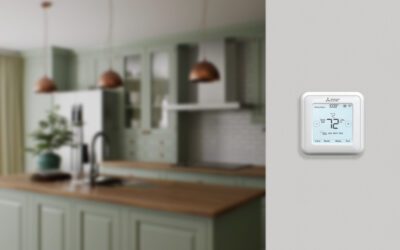When it comes to keeping your home cozy during chilly months, selecting the right heating system is pivotal. Among the various options available, heat pumps and furnaces stand out as popular choices. Both serve the same purpose of warming your home but operate differently. Deciding between a heat pump and a furnace involves understanding their functionalities, efficiency, and suitability for your specific needs.
Heat Pump: Embracing Efficiency and Versatility
How It Works: A heat pump functions by transferring heat from one place to another. During winter, it extracts heat from the outdoor air (yes, even in cold climates) and pumps it indoors. In summer, it works in reverse, extracting heat from your home and releasing it outdoors to cool your living space. Pros:
- Energy Efficiency: Heat pumps are renowned for their energy efficiency, as they move heat rather than generate it, consuming less electricity.
- Dual Functionality: They serve as both heating and cooling systems, making them versatile for year-round use.
- Environmental Impact: Due to their energy efficiency, they are considered eco-friendly compared to traditional heating systems.
Cons:
- Effectiveness in Extreme Cold: In extremely low temperatures, the efficiency of a heat pump may decrease, requiring a backup heating source.
- Upfront Cost: Initial installation costs can be higher than some traditional heating systems.
Furnace: Dependable and Powerful
How It Works: Furnaces generate heat by burning fuel (natural gas, oil, or propane) and distributing the warmed air throughout your home using a system of ducts. Pros:
- Powerful Heat Output: Furnaces can quickly and effectively heat your home, making them ideal for cold climates.
- Consistent Performance: They can maintain a consistent level of warmth, regardless of outdoor temperatures.
- Lower Upfront Costs: Furnaces often have lower initial installation costs compared to heat pumps.
Cons:
- Higher Operational Costs: They tend to be less energy-efficient than heat pumps, leading to higher utility bills over time.
- Environmental Impact: Furnaces that run on fossil fuels contribute to carbon emissions and may not be as environmentally friendly as heat pumps.
Which Should You Choose?
Considerations:
- Climate: Heat pumps excel in moderate climates but may need a backup in colder regions, while furnaces are reliable in harsh winters.
- Energy Efficiency: If reducing energy consumption is a priority, a heat pump might be more suitable.
- Budget: Upfront costs and long-term operational expenses should align with your budgetary constraints.
In summary, the choice between a heat pump and a furnace depends on various factors, including your climate, budget, and environmental concerns. While heat pumps offer energy efficiency and versatility, furnaces provide powerful and consistent heating. Consulting with HVAC professionals can help tailor the choice to your specific needs, ensuring optimal comfort and efficiency for your home.At K E Bergeron Mechanical Systems, we are here to assist you in making the best choice for your home’s heating needs. Contact us today to schedule a consultation and learn more about our heating system installation and maintenance services.




































